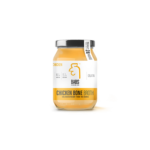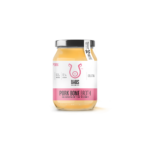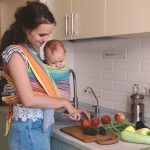These days it’s rare not to know someone following the keto diet. This popular eating regimen has taken the world by storm because of its many benefits. If you’re wondering if the keto diet is right for you, keep reading. We’ll discuss exactly how this diet works, tell you what you can and cannot eat, and offer tips for keto diet success when you’re just starting out.
How does the keto diet work?
The keto diet restricts carbohydrates and focuses on acquiring energy primarily from fats. “Keto” is short for “ketogenic,” which shows how the diet got its name. The fats you consume in this diet are oxidized in the liver and broken down in a process called “ketogenesis.” The resulting free fatty acids fuel your muscles for daily activities and exercise.
In addition, acetoacetate forms and transforms into ketones. Ketones can replace glucose as a fuel source for your brain and nervous system instead of glucose, which you would otherwise get from carbohydrates. Eventually, your body becomes “ketoadapted,” also known as being “in ketosis.” As a result, it becomes highly efficient at using fats for energy.
Can you lose weight with the keto diet?
Because the keto diet relies on fat as a fuel source, it is possible to lose weight on this eating plan. In addition, experts have clinically studied the short-term effects of keto on obese patients. In fact, many people start the keto diet with weight loss in mind.
Ketosis helps make this process easier, and of course, the significant reduction in carbohydrates means you’re not converting more unused calories to fat either. Once you lose the weight you want, you can tweak the keto diet and remain on it to stay at the weight you like.
What can you eat on the keto diet?
What you can eat
It’s helpful to think of the keto diet as a food pyramid. The base of the pyramid is all the foods you eat most often on this plan:
- Meat, poultry, fish, eggs, and organ meats
- Fats and oils, such as butter, coconut oil, and olive oil
- Herbs, spices, and carbohydrate-free flavorings
- Vegetables and fruits that contain no starch, like asparagus and avocado
The next tier consists of low-carb fruits and vegetables:
- Tomatoes
- Broccoli
- Peppers
- Pumpkin
- Mushrooms
- Cauliflower
Full-fat dairy foods, like milk and cheese, occupy the next level on the pyramid, followed by nuts, seeds, low-carb fruits, and berries. Which fruits are considered low in carbohydrates?
- Oranges
- Kiwis
- Lemons
- Watermelon
You can drink water, coffee, and tea on this diet as you usually do. In general, alcoholic beverages are discouraged (they have carbohydrates, plus they lower your willpower). However, you can occasionally indulge in low-carb liquor.
Bone broth is an excellent beverage to sip or add to your keto recipes, like homemade soups and stews. Bone broth is high in collagen, one of the body’s most essential building blocks.
What not to eat
The following are the foods you should not eat on the keto diet. You’ll notice that many of these foods are not recommended on other diets as well, as they’re simply unhealthy for you:
- Processed foods
- Vegetable oil
- Soda
- Items made with sugar, honey, or agave nectar
- Bread, tortillas, cereals, and grains
- Crackers and chips
- Pasta
- Rice
- Potatoes
- Soy
- Legumes and beans
- Dried fruits
- High-carb fruits (pineapple, bananas, mango, etc.)
- Most low-fat or “diet” foods (high in carbohydrates)
The good news is that today there are many new substitutes for keto’s “forbidden” foods. For example, you can make or buy crusts made from cauliflower that let you enjoy pizza without guilt. And there are keto-friendly carb-free breads and baked products available too.
Is the keto diet dangerous?
Although it may seem new, the keto diet was actually developed in the 1920s by Dr. Russell Wilder at the Mayo Clinic. It wasn’t originally designed as a weight loss diet but for children resistant to other epilepsy treatments to prevent seizures. Unfortunately, once anticonvulsant drugs came on the scene in the 1940s, most people forgot about the keto diet.
However, it came back into the spotlight in the 1990s when a Hollywood producer used it successfully for his epileptic child. The weight loss and other benefits (see below) were examined in greater detail, and the diet grew in popularity, not just for youngsters with epilepsy.
Because it has been around for so long and was created for children, the keto diet is one of the most well-studied eating regimens of all time. The diet is completely safe for most people, but it’s always wise to consult with your healthcare provider when starting any new diet. For some people, the keto diet may not be ideal. For example:
- People with type 1 diabetes
- People using treatment (in ways other than keto) for epilepsy or seizure disorders
- Pregnant or nursing women
- Those with a history of eating disorders
- People with kidney, liver, or pancreatic conditions
- Those who have had their gallbladder removed
- People with a history of cardiac disease or at high risk of heart disease
- Those who have some types of digestive disorders
- People who have undergone gastric bypass surgery
- People with metabolic disorders
Keto is also hard to follow if you’re a vegan or vegetarian due to the limitations in non-animal proteins, in which case another diet may be best for you.
What is bone broth?
The methods for making bone broth today have been modernized for efficiency, sanitation,...
Read MoreWhat is gelatin?
Gelatin is a great source of nutrients that are widely beneficial to your...
Read MoreBone Broth for Runners and Triathletes: A Great Training Aid for Hard Workouts
Whether you’re training for your first 5K run or you’re a seasoned triathlete,...
Read MoreIs the keto diet helpful for health conditions besides being overweight?
Experts are still researching the keto diet today, especially since so many people have embraced it. Some people have anecdotally found the diet helpful for other health issues, such as:
- Insulin resistance
- Type 2 diabetes
- Mood disorders
- Dry skin and hair
- Brittle nails
- Joint pain
You should never discontinue any prescribed medications when you start the keto diet. However, you and your healthcare practitioner may decide together to adjust your treatment plan for certain conditions based on success over time with the keto diet.
What is a typical keto diet plan?
A keto diet plan starts with smart shopping. First, make a list of all the things you can eat on the keto diet and jot down some recipes to try. Then, shop with your weekly meal plan in mind, using the list. Be sure to read labels carefully if you’re unsure if something contains ingredients you shouldn’t be eating.
Many keto devotees like to post a weekly menu and keto diet schedule on the fridge so they know what they’re eating when. This lets them prep food in advance, such as chopping up meat and vegetables to take for lunch. And it helps prevent straying from the diet. Once you go into ketogenesis, you don’t want to go out of that state and have to start all over by eating too many carbohydrates.
A typical daily plan might look something like this:
- Breakfast – crustless quiche made with eggs, ham, cheese, and spinach, plus a cup of coffee
- Lunch – a salad of mixed greens, bell peppers, tomatoes, and tuna in an olive oil-based vinaigrette dressing, plus an unsweetened iced tea and a slice of watermelon
- Snack – mixed berries and a handful of raw almonds
- Dinner – Grilled chicken with a portabella mushroom pizza (using the mushroom as the base), plus sparkling water with lemon juice and a dessert such as chocolate mousse made with cream, cacao powder, vanilla extract, and a natural carb-free sweetener (e.g., stevia)
As you can see, you don’t have to give up snacks or desserts to follow the keto diet. And there’s no calorie counting either! Be sure to drink plenty of water with and between meals. Carbohydrates hold water in the body, so it’s easier to become dehydrated on the keto diet.
What are the best keto diet recipes?
There is no one best keto recipe. The best keto diet recipes are the ones that are right for you. That means:
- You like the foods and will eat them regularly
- You can find the ingredients readily near you or order them online
- The recipe components work with your budget
- You know you will prepare the recipes as needed (not outside your culinary skillset) and will not be tempted to substitute with non-keto foods
- The ingredients are healthy and not merely packaged and processed versions of low-carb foods
So, it doesn’t matter if all your friends on keto are eating bacon with every meal. If you don’t like bacon, you can enjoy chicken legs, salmon, steak, or eggs in your recipes.
Fortunately, there are tons of great keto recipes to be found online today if you don’t feel like buying a keto cookbook. Pinterest and Instagram, in particular, have thousands of delicious recipes, and you can see how well-liked they are by people who have tried them in the comments. You can also learn how to prepare keto recipes on YouTube.
What are some keto diet tips for beginners?
For most folks, starting the keto diet is the hardest part. However, once they’re on it for a while, it becomes second nature, and it’s easy to stay on track. Here are some tips for beginning the diet that will get you off to a good start:
- Keto diet experiences vary in the beginning. Expect to feel different or a little tired for the first few days. Don’t make big plans during the first week of the diet, and you may want to skip heavy workouts for three or four days as you commence.
- Some people like to start with a fast for a few days rather than switching diets cold turkey. This lets them ease into the keto diet more efficiently, with fewer side effects. In addition, you can sip bone broth when you fast, which will help support your body and offer nourishment without putting excess strain on your digestive system.
- Plan how you will deal with situations like work luncheons, dining out, holidays, and the like. For example, you may want to bring your own dishes or keep keto-friendly foods on hand.
- Keep a water bottle handy so that you can stay fully hydrated.
- Carry some mints or gum with you in case “keto breath” strikes when you’re in a heavy ketone-burning phase (usually when you haven’t eaten in a while).
- Remember to consume plenty of fiber (not just meats and dairy) for your digestive motility.
- Focus on eating as cleanly as possible. This means healthy, minimally processed foods that are close to nature and densely packed with nutrients.
At Babs Bone Broth, we’re here to help you feel and look better with the best diet for you. In addition, we want to support you with fasting and starting the keto diet. To learn more about the many benefits of bone broth and how you can have the best quality bone broth shipped directly to you, visit our webshop.
This content is for informational and educational purposes only. It is not intended to provide medical advice or to take the place of such advice or treatment from a personal physician. All readers/viewers of this content are advised to consult their doctors or qualified health professionals regarding specific health questions. Neither Babs Bone Broth nor the publisher of this content takes responsibility for possible health consequences of any person or persons reading or following the information in this educational content. All viewers of this content, especially those taking prescription or over-the-counter medications, should consult their physicians before beginning any nutrition, supplement or lifestyle program.













